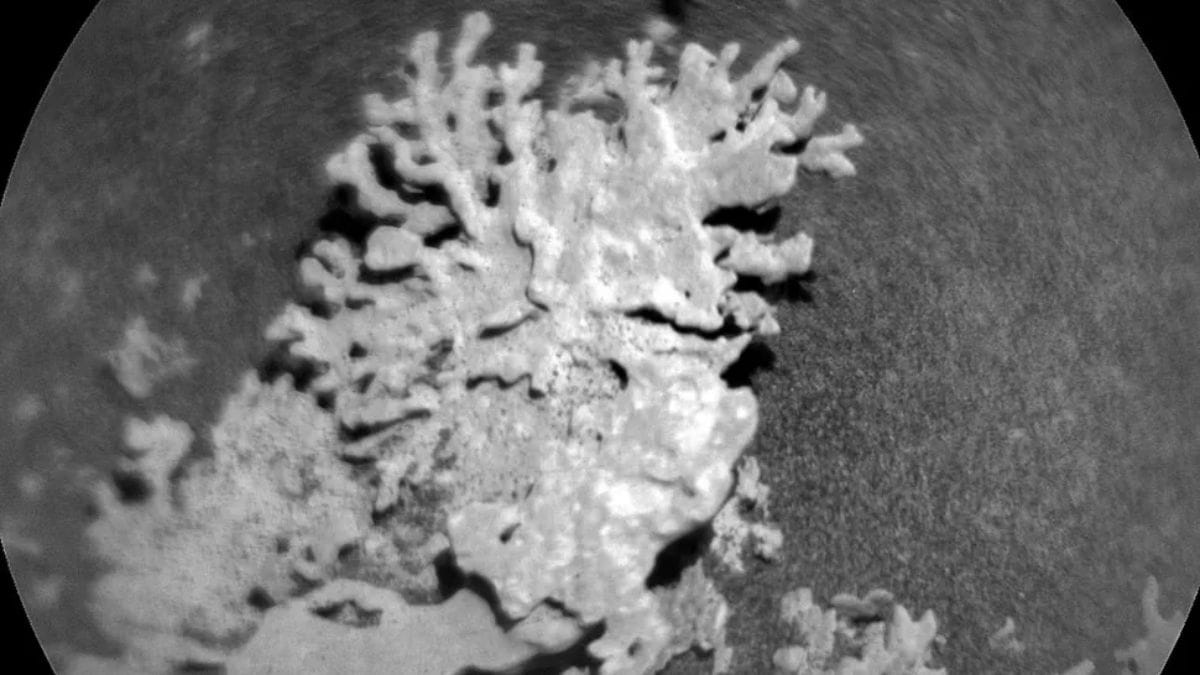NASA’s Curiosity Rover Spots Ancient Coral-Like Rock on Mars

NASA’s Curiosity Mars rover used the Remote Micro Imager, part of its ChemCam instrument, to view a small, light-colored, wind-eroded rock, shaped like a piece of coral on July 24, 2025, the 4,609th Martian day, or sol, of the mission in Gale Crater. Curiosity has found many rocks like this one, which were formed by ancient water combined with billions of years of sandblasting by the wind. The approximately 1-inch-wide (2.5 centimeters) rock with its intricate branches. indicates that Mars once had a watery environment and could have supported life.
According to NASA, Curiosity has found many features like this that formed “billions of years ago when liquid water still existed on Mars” On early Mars, liquid water carried minerals into tiny fractures in rocks; when the water evaporated, it left behind mineral veins. Later, fast winds laden with sand eroded the surrounding rock, leaving behind intricate, branch-like concretions. This process – common on Earth in arid deserts – can create shapes that mimic biological forms, but are purely mineralogical. Thus, researchers stress the rock’s appearance is pseudofossil like: it looks like coral by chance, but is a geological artifact of past water activity. The find reinforces evidence of early Mars being wetter and possibilities of having microbial life.
Curiosity landed on Mars in 2012, touching down in the Gale Crater — a meteor impact crater on the boundary between the Red Planet’s cratered southern highlands and its smooth northern plains. The rover’s mission, led by NASA’s Jet Propulsion Laboratory in California, is to scan the Martian surface for any signs that it was habitable at any point in the distant past.The discovery was made on July 24, 2025 (Sol 4609 of the mission) by Curiosity’s ChemCam remote micro-imager and the image was released by NASA’s Jet Propulsion Laboratory in early August.